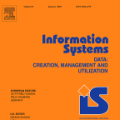The emerging technology of Vehicle-to-Vehicle (V2V) communication over vehicular ad hoc networks promises to improve road safety by allowing vehicles to autonomously warn each other of road hazards. However, research on other transportation information systems has shown that informing only a subset of drivers of road conditions may have a perverse effect of increasing congestion. In the context of a simple (yet novel) model of V2V hazard information sharing, we ask whether partial adoption of this technology can similarly lead to undesirable outcomes. In our model, drivers individually choose how recklessly to behave as a function of information received from other V2V-enabled cars, and the resulting aggregate behavior influences the likelihood of accidents (and thus the information propagated by the vehicular network). We fully characterize the game-theoretic equilibria of this model using our new equilibrium concept. Our model indicates that for a wide range of the parameter space, V2V information sharing surprisingly increases the equilibrium frequency of accidents relative to no V2V information sharing, and that it may increase equilibrium social cost as well.
翻译:车辆对车辆(V2V)通信的新兴技术对车辆临时网络而言,通过允许车辆自动相互警告道路危险,有望改善道路安全。然而,关于其他运输信息系统的研究显示,只告知道路状况的一组驱动因素可能会产生越来越拥挤的反常影响。在V2V危险信息分享的简单(新颖)模式中,我们问部分采用这一技术是否同样会导致不良结果。在我们的模式中,驾驶员个别地选择如何轻率地作为从其他V2V驱动汽车获得的信息的函数行事,以及由此产生的综合行为对事故发生的可能性产生影响(从而影响由车辆网络传播的信息 ) 。我们用我们新的平衡概念充分描述这一模式的游戏理论平衡。我们的模型表明,对于广泛的参数空间,V2V共享信息会令人惊讶地增加事故与无V2V信息分享的均衡频率,并且会增加平衡的社会成本。




